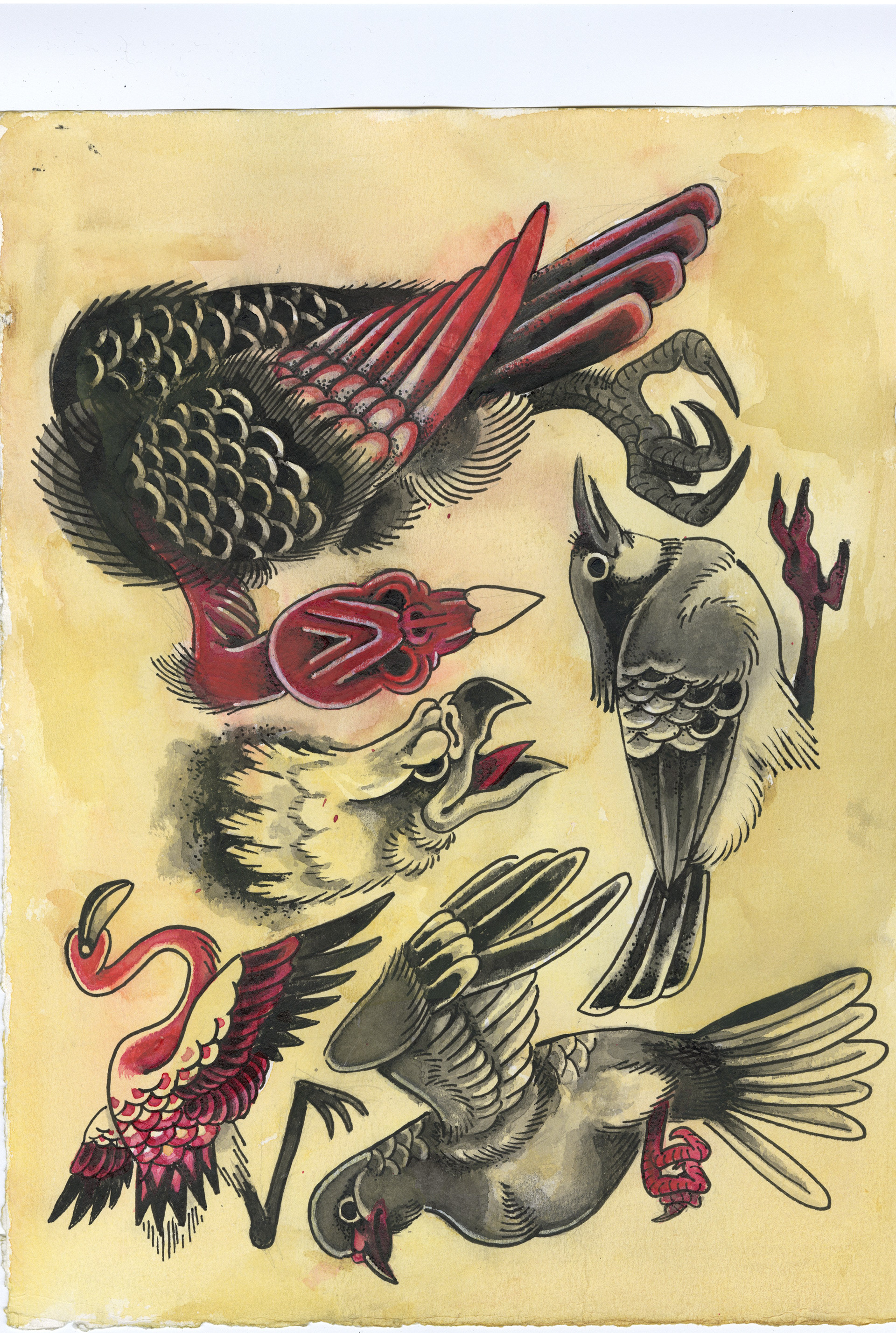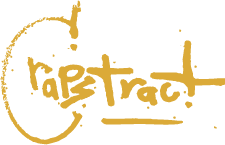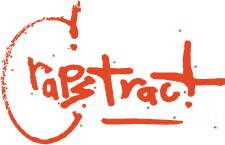THESIS
My thesis presents a unique opportunity to adapt my artistic expertise and passion for the Japanese tattooing style. This project aims to blend distinctly different styles that have been informed and guided by my mentor and instructors, allowing me to draw on their insights and experiences. My focus is to challenge the existing conventions of tattooing by reinterpreting American imagery through the lens of Japanese technique.
At the core of my project lies a significant challenge: the traditionally one-way exchange of tattooing styles. Modern tattooing methods have largely been influenced by historical Japanese methods that have become known as American traditional tattooing arrived via Japanese techniques when they were applied to Western sailor imagery. This lineage resulted in a simplified adaptation of the subject matter. My goal has been to reverse this notion, retroactively producing tattoo designs that represent American folk imagery portrayed in the Irezumi (traditional Japanese) style. This endeavor requires me to navigate the complexities of artistic expression and historical context while in the end landing on designs that translate to the technical specificities of application on skin.
A big hurdle I’ve faced throughout this project stems from my emerging experience as an apprentice. I often find myself grappling and attempting to explore the artistic aspects of tattooing before fully having a solid foundation of the mechanical techniques required. This challenge drives my exploration, as I strive to balance creativity with the technical understanding that is essential to this craft.
The journey of my creative process has been highly iterative. I have begun many drawings, all of which have undergone significant revision — some ultimately being scrapped when not redrawn entirely. My primary research has involved studying traditional American flash designs and Japanese woodblock prints, to comprehend their historical significance and adaptations over time. Japanese tattoos classically depict a narrative that’s a mix of the natural world contrasted by the supernatural. In my own practice I tend to be drawn more towards the latter ,so to stray from my typical subject matter I decided to only make imagery that can be found in the natural world. Coupled with that, I examined how American traditional tattoos evolved from these methods and sought to meld these elements into a Frankenstein way that combines both styles.
PROCESS



This project’s final deliverables are: 4 flash sheets and a sleeve all executed within a limited color palette of red, black, and white. This deliberate choice reflects a traditional aesthetic while allowing for nuanced expression within the constraints of color. My initial 4 flash sheets were made up of two sheets of flowers and two sheets of animals that are both either native or feel intertwined to American identity in some way. These sheets served as a foundation for more complex sleeve design which depicts a fu dog fighting an eagle, the fu dog is the Chinese interpretation of a lion, and this narrative is meant to mirror the American revolution with the fu dog acting as England. The compilation of multiple designs on a page is something inherent in American traditional tattoos, to offset this my sleeve design had to have an emphasis on composition. The Japanese formatting of tattoos also has strict parameters, always incorporating flat and gradient grays, scalloped backgrounds, swirls, and natural elements, to structure my subject matter composition.
Throughout this process, I documented my findings, inspirations and unforeseen failures, allowing me to refine my concepts continually. My objective has been to create a dialogue between the two worlds. With this project I sought to further broaden my understanding of image making and limited palette substitution that is the creative essence of tattooing.
Looking ahead, I am committed to pursuing this dialogue between styles and broadening my understanding of this trade. My aspiration is to delve deeper into the nuances of Tattooing, traditions, and imagery, while continuing to explore alternative methods of artistic expression. I will be revising these sheets and expanding my exploration of not only the natural world but also the supernatural as I grow as an apprentice and artist.
DELIVERABLES
TRAGEDY
Additionally, a week before my visual component of this thesis was due- I ruined my sheets completely. As I looked over my finished pieces, I thought a nice finishing sheet would be to give it yellow stain to make it feel authentic. This stain and negligence of my medium used would be my eternal sin. I knew in theory but in practice why people specified the fact of something being water proof vs water soluble ink. I quickly found out the difference and which i was using firsthand when I watched all of my tonal value lift off three of my sheets and water the paper to look like a water color painting. I say three sheets instead of three because I initially used the bird sheet as my control- to see how harsh the yellow or the warping would be. This would be successful if it had not been for my switching mediums after completing that sheet to save time. My control sheet was in fact not representative of the results of the others because it was in fact waterproof.
After this mess of ink, I felt that instead of trying to rework the damage done my best course of action is to remake these sheets start to finish. frantically, 8 days before they were due I drew and sketched and lined and painted. I decided to learn from my previous failures and and do the long way- at this point if I knew that something worked that was more than enough than trying to avoid the dry time of washes. Furthermore, decided to nix the traditionally added stain on my sheets; leaving it black without a tone would overall give me less anxiety and room for error. This time, i fully scanned my pieces at the end stage so if some act of god did happen, i would not be in the same position as i was previously.

Overall, I’m happy to have failed so terribly. It gave me an opportunity to remake these sheets in a way I feel is better than before. Both the painting and drawing portion of these sheets were easier to execute the second time- at this point after ideating, drawing the same subject over and over again that I can now tattoo these designs in my sleep.


